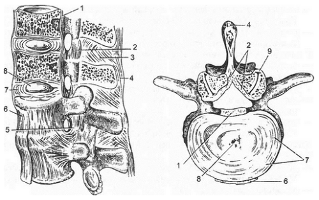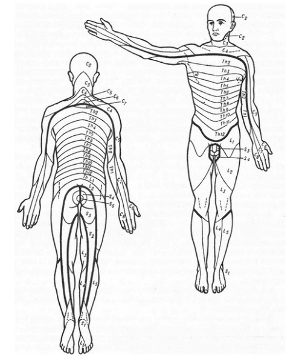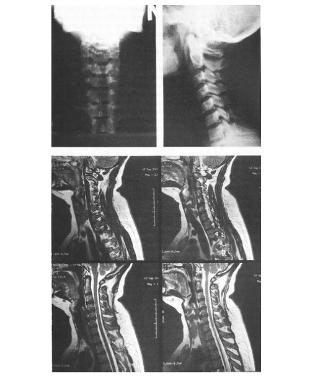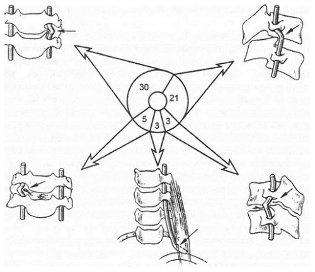Cervical osteochondrosis refers to the "disease of the century". Its manifestation most often affects people aged 25-40, which causes them a lot of inconvenience in everyday life.
The cervical spine is constantly in motion and therefore exposed to serious stress during the day.
In addition, a large number of nerve endings and vascular formations are concentrated here, which are responsible for the correct functioning of the brain and its timely saturation with blood.
The problem lies in the dysfunction of the articular cartilage in the bone tissue.
Acute osteochondrosis with changes in the intervertebral discs and their displacement leads to a decrease in blood flow and develops oxygen deficiency in the human brain.
The development of a dystrophic process in the intervertebral discs can have serious consequences, which is why the disease requires mandatory treatment.
Signs of illness

It is possible to determine the development of cervical osteochondrosis at an early stage by the grinding of the neck that occurs during head rotation.
Affected people also report tinnitus and general discomfort in the neck area, which manifests itself in painful sensations (can even appear in the fingers on the hand).
It is often not possible to localize pain. It all just depends on which parts of the cervical spine were damaged. The defeat of the intervertebral disc with dislocation is described in different ways by the patients, but they notice stabbing pain.
A pinched joint or an injury due to friction with the intervertebral discs of the spine is described differently: A dull pain in the collar area is almost constant and does not subside even without sudden movements.
How osteochondrosis of the neck manifests itself
If you develop strange back and neck pain, you should immediately seek medical advice for treatment. It is possible that all of this is psychosomatic, however the disease is often confirmed by a doctor.
For this reason we have compiled an excerpt and highlighted the most important signs of osteochondrosis of the cervical spine:

- Headache, accompanied by dizziness. This is the very first and most common symptom of all patients. In the spine, additional pressure is put on the delicate vessels of the head and neck, which slows down their filling with the required amount of blood. Against the general background, efficiency and mental activity decrease, and a person quickly becomes tired even with simple tasks.
- dizziness when turning the head to the side. For a short time the access of blood through the vessels and capillaries is blocked, which leads to a "clouding" of the activity of the human brain system.
- pain in chest and arms. Often this manifestation of a serious disease is confused with growing angina or pain in the myocardium, so you should not bother yourself with the correct diagnosis and subsequent self-medication.
- Lumbago in the neck region. Back pain is also a common symptom of osteochondrosis of the cervical spine. It is similar to an electric shock and can later spread to the elbow joints and fingers.
- Numbness of the tongue. The lack of blood in the vessels leads to a restriction of tongue movement. If your tone of voice has changed or it has become much more difficult to speak, consult a doctor immediately so as not to provoke further development of the disease.
Symptoms of osteochondrosis of the cervical spine
In some patients, the disease may manifest itself with other signs. So if you are not sure what may have caused the back or neck pain, it is advisable to consult your doctor.
Ringing in the ears, worsening of teeth and vision - all of these can lead to the development of osteochondrosis. Numbness of the fingers can occur at any time of the day, which is associated with sharp compression of the nerve endings in the vertebrae.
Unfortunately, the disease is increasingly manifesting itself in young people who do not pay enough attention to it. Over time, for no apparent reason, the disease can take a chronic course with a change in posture, the appearance of obesity and the development of infectious diseases.

Even experienced doctors find it difficult in this case to make an accurate diagnosis against the background of indicators that differ in symptomatology.
Types of exacerbations
Often people's inattention to their own health exacerbates cervical osteochondrosis. So what are the exacerbations and what are they causing?
On your nerves
Unfortunately, stressful situations in everyone's life lead to a deterioration in the nutrition of the intervertebral disc.
We do not even notice that when we are very excited or overexcited, we move chaotically, which leads to an exacerbation of osteochondrosis with all the resulting consequences (dizziness, tinnitus, headache).
If you suffer from osteochondrosis of the cervical spine, it is recommended to take the sedative tablets "Glycesid" and "Novo-Passit" during an obligatory visit to a neurologist or psychotherapist.
After the massage
Slimming massage in most cases leads to an aggravation of the disease.
Before the session begins, the massage therapist must be informed that you have a confirmed diagnosis of cervical osteochondrosis.
Neurologists often advise professional massage therapists who perform massages taking into account the recommendations of doctors.
Seasonal
Changes in weather and climatic conditions cause the disease to worsen seasonally, and this is a scientifically proven fact. Intervertebral discs are sensitive to temperature and atmospheric changes, so pain and other symptoms can occur.
After drinking
Another typical example of an exacerbation of osteochondrosis is drinking alcohol. The body is affected not only by the alcohol contained in drinks, but also by the long stay of a person in an uncomfortable position.
Don't rule out situations where hot people simply forget to wrap themselves warm to expose nerve endings to hypothermia due to the "warmth" that has risen over them.
During your period
In women, menstruation is accompanied by a sharp decrease in the level of estrogen, which is responsible for the integrity of the bone tissue in the body.
If the pain in the lumbar region, chest and neck does not go away for a long time, it is a reason to see a doctor, as it may not be caused by the menstrual cycle and its symptoms, but by the manifestation of osteochondrosis of the cervical spine.
During a cold
Changes in body temperature during illness cause inflammatory processes at the nerve endings in the intervertebral discs. Which in turn can lead to deterioration.
What is the risk of cervical osteochondrosis?

Cervical osteochondrosis in advanced stages can lead to the development of vascular dystonia, high blood pressure, memory and hearing disorders. In extreme cases, patients experience impaired hand function and persistent pain in the forearms.
High blood pressure is a scourge of society. It is not without reason that it is referred to as "silent death". Few of the patients can imagine that early treatment of osteochondrosis can lead to the manifestation of hypertension, which proceeds without any visible manifestations and symptoms.
Concerns should also include possible changes in a person's vasculature as they can develop a variety of diseases and complications afterwards.
Diagnosis of cervical osteochondrosis
A tactile method is used to diagnose osteochondrosis of the cervical spine. You can use it to assess the painful sensations in the spine, the sensitivity of the nerve endings, as well as other features that are important for a correct and accurate diagnosis.
After being examined by a neurologist, the patient is referred for an x-ray of the cervix, which is done in several projections to get a clearer picture.
If the doctor does not diagnose the disease precisely or if there are other suspicions, a computed tomography or an MRI scan will be performed. In contrast to X-rays, it shows the condition of soft tissues very well.
Treatment
Traditional and non-traditional methods of treating osteochondrosis of the cervical spine are good in their own way, but do not forget that you need to consult a doctor as he will be able to prescribe the correct treatment.
Conservative treatments include:
- Analgesic therapy
- Taking nonsteroidal drugs
- Taking antispasmodic agents
A mandatory requirement in the treatment of osteochondrosis of the cervical spine is the use of chondroprotectors, which allow the restoration of the damaged structure and integrity of the intervertebral discs.
The doctor prescribes a general massage and an acupressure massage, as well as B vitamins. In advanced cases, it may be necessary to wear a shants collar and exercise therapy.
Thus, the treatment of osteochondrosis of the cervical spine is possible, but should be done at an early stage of the manifestation of the disease in order to exclude its future occurrence.





































